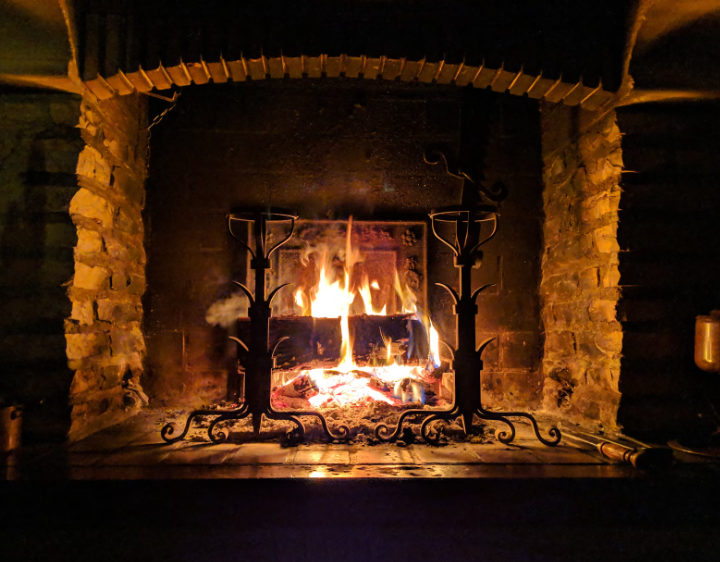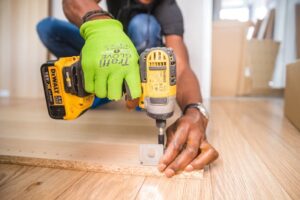
A warm, crackling fire is one of the most cherished features of older homes, evoking a sense of nostalgia and comfort. However, maintaining a chimney in an older home comes with unique challenges. Proper care is essential to ensure safety, efficiency, and longevity. This blog post will guide you through the intricacies of chimney care, providing you with practical tips and insights.
Understanding the Importance of Chimney Maintenance
Chimneys play a vital role in venting smoke, gases, and other byproducts of combustion out of your home. Neglecting chimney maintenance can lead to dangerous situations, including chimney fires and carbon monoxide poisoning. Regular maintenance ensures that your chimney operates efficiently and safely.
Recognizing Common Issues in Older Chimneys
Older chimneys can suffer from a variety of issues due to age and wear. Common problems include deteriorating mortar joints, cracked flue liners, and creosote buildup. Identifying these issues early is crucial to prevent further damage and costly repairs.
Inspecting the Chimney Structure
A thorough inspection is the first step in chimney care. Look for visible cracks, loose bricks, and signs of water damage. Pay special attention to the condition of the mortar joints, as weakened mortar can compromise the chimney’s structural integrity.
The Role of a Professional Inspection
While a visual inspection is helpful, a professional chimney sweep can provide a more comprehensive assessment. They use specialized tools and cameras to inspect the interior of the chimney, ensuring that no hidden issues go unnoticed.
Cleaning and Removing Creosote Buildup
Creosote, a byproduct of burning wood, can accumulate inside the chimney and pose a fire hazard. Regular cleaning is essential to remove this buildup. A professional chimney sweep can safely clean the chimney, reducing the risk of chimney fires.
Addressing Cracks and Mortar Deterioration
Cracks in the chimney structure and deteriorating mortar joints are common in older homes. These issues can allow water to seep into the chimney, causing further damage. Repointing the mortar and sealing cracks can help maintain the chimney’s integrity.
The Importance of Waterproofing
Water is one of the most significant threats to an older chimney. Waterproofing the chimney exterior can prevent water from penetrating the bricks and mortar. Applying a waterproof sealant can extend the life of your chimney and reduce the risk of water damage.
Repairing or Replacing the Chimney Cap
The chimney cap plays a crucial role in preventing debris, animals, and water from entering the chimney. Over time, chimney caps can become damaged or corroded. Inspect the cap regularly and replace it if necessary to ensure proper protection.
The Function of the Chimney Flue
The chimney flue is the passage through which smoke and gases exit the home. A damaged flue can lead to poor ventilation and an increased risk of chimney fires. Regular inspection and maintenance of the flue are essential to ensure safe operation.
Upgrading the Chimney Liner
Chimney liners protect the chimney walls from heat and corrosion. In older homes, liners may be missing or damaged. Upgrading to a modern chimney liner with the help of a professional service like Pro Sweep Chimney Service can improve safety and efficiency. Stainless steel liners are a popular choice due to their durability and heat resistance.
Managing Efflorescence and Stains
Efflorescence, a white powdery substance on the chimney surface, indicates water penetration. Addressing the underlying water issue and cleaning the affected area can help manage efflorescence. Additionally, removing stains caused by soot and smoke can restore the chimney’s appearance.
Ensuring Proper Ventilation
Proper ventilation is essential for efficient chimney operation. Ensure that the chimney has adequate airflow to prevent smoke and gases from accumulating inside the home. Regularly check and clean the chimney vents to maintain optimal ventilation.
Protecting Against Animal Intrusions
Animals such as birds, squirrels, and raccoons can enter chimneys and create blockages. Installing a chimney cap with mesh can prevent animals from entering while allowing smoke to escape. Regularly inspect the cap to ensure it remains intact.
Seasonal Maintenance Tips
Different seasons present unique challenges for chimney care. In the fall, prepare your chimney for increased use by scheduling a professional cleaning. In the spring, inspect for any winter-related damage and address it promptly. Regular maintenance throughout the year ensures that your chimney remains in excellent condition.
Taking care of a chimney in an older home requires diligence and regular maintenance. By understanding common issues, conducting thorough inspections, and performing necessary repairs, you can ensure the safety and efficiency of your chimney. Remember, professional assistance is invaluable in maintaining your chimney’s health.


